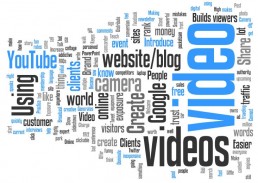Why you should still post on your blog!
Posting on your own blog still holds substantial value, even in a social media-dominated landscape, though it works best when used alongside social platforms. Here’s why maintaining a blog on your website remains relevant and can benefit your marketing strategy:
1. Boosts SEO and Organic Reach
A blog is one of the most effective tools for improving search engine optimization (SEO). Each post is an opportunity to rank for specific keywords relevant to your business, driving organic traffic from Google and other search engines. This is traffic you won’t easily get from social media, where content visibility fades quickly. Well-written, SEO-optimized posts can help you rank for targeted topics, creating a steady stream of visitors to your site over time.
2. Establishes Brand Authority and Trust
Your website is often the first place potential clients look for credible information. Having an archive of blog posts showcases your expertise and builds trust. It’s a place where you can share in-depth insights, detailed guides, case studies, and other content that’s harder to display effectively on social media. Long-form content is often shared on social media too, leading readers back to your website where they can explore more.
3. Gives You Full Control of Content
Social media platforms are amazing for reach, but they come with limitations—algorithms change, reach fluctuates, and you’re competing with countless other posts. With a blog on your website, you own your content and control its presentation and organization. It also serves as a permanent library of your insights and achievements without the risk of disappearing if a social platform’s popularity wanes or its algorithm changes drastically.
4. Ideal for Repurposing Content
Think of your blog as a content hub. Blog posts can be broken down into smaller social media posts, email newsletters, or turned into video scripts. Posting first on your blog gives you a solid, detailed piece of content that can then be adapted to other platforms, reaching audiences on multiple fronts with minimal extra work.
5. Combining Website Blogging with Social Media
A balanced approach can yield the best results. Post key insights, snippets, or short versions of your blog posts on social media to generate interest and engagement. For those who want more depth, link back to the full post on your website. This strategy allows you to reach the broader audience on social media while still driving traffic to your site, creating a path for visitors to explore your services, contact you, or engage further.
In essence, maintaining a blog on your website is a long-term investment in your brand’s visibility and credibility. Social media helps with immediate reach and engagement, while a website blog supports discoverability and authority-building in the longer term. By leveraging both, you create a comprehensive digital presence that engages audiences across platforms and deepens their relationship with your brand.
Why Organic Engagement Beats Cold Calls and Shotgun Emails for Sales
In the modern digital marketing landscape, the approach to sales has evolved significantly. Traditional methods like cold calls and shotgun emails often fall short compared to organic engagement, which focuses on building genuine relationships with customers.
Cold Calls and Shotgun Emails:
Cold calls and shotgun emails are intrusive and often unwelcome. They typically involve reaching out to a broad audience without prior interaction or consent. While these methods can sometimes generate leads, they often lead to:
- Low Conversion Rates: Recipients are likely to ignore or reject unsolicited communication.
- Negative Perceptions: Persistent cold calls and mass emails can damage your brand’s reputation.
- High Costs: These methods require significant time and resources with limited returns.
Organic Engagement:
Organic engagement, on the other hand, focuses on naturally attracting and interacting with customers through meaningful content and interactions. Here’s why it’s more effective:
- Building Trust: By providing valuable content and engaging with customers genuinely, you build trust and credibility.
- Higher Conversion Rates: Customers who engage organically with your brand are more likely to convert due to established interest and trust.
- Cost-Effective: Organic engagement often involves leveraging existing platforms and content, making it more cost-effective in the long run.
Strategies for Organic Engagement:
- Content Marketing: Create informative and engaging content that addresses your audience’s needs and interests.
- Social Media Interaction: Engage with your audience on social media platforms through comments, messages, and shares.
- Community Building: Foster a community around your brand where customers can share experiences and provide feedback.
In conclusion, organic engagement not only enhances customer relationships but also drives more sustainable and higher-quality sales compared to traditional methods like cold calls and shotgun emails. By focusing on building trust and delivering value, your brand can achieve long-term success and customer loyalty.
From Ownership to Partnership: The Role of Internal Communication
Your business is more than a collection of transactions...
It’s a tapestry woven by the threads of communication. The lack of communication, akin to snipping those threads, can unravel the very fabric of your organization. Internal communication serves as the loom that not only repairs but strengthens these threads, transforming employees from mere workers into committed partners.
Consider the analogy of loyalty as an illusion dispelled.
True loyalty is not a mere emotional attachment; it’s a result of a dynamic process of building and earning trust. Transparent communication is the key to unlocking this loyalty, as it offers employees a window into the highs and lows of the business. When they understand the journey, they become invested partners, not just paycheck recipients.
Employees invest more than just their time; they invest their beliefs and aspirations. While monetary compensation acknowledges their temporal commitment, transparent communication cultivates a belief in shared goals. When the company’s objectives align with individual aspirations, a sense of shared ownership emerges, transforming the workplace dynamic.
Internal communication is not just a channel for information dissemination; it’s the catalyst for a cultural shift. Open communication fuels the transition from a unilateral employer-centric model to a partnership paradigm. This transformation doesn’t just happen; it’s a deliberate process of sharing the ‘whys’ behind decisions, fostering understanding, and building a collective vision.
Understand this: internal communication is the bridge that transforms ownership into partnership. When employees feel a stake in the company’s journey, when their ideas and beliefs are acknowledged, a culture of shared goals emerges.
This evolution isn't just organizational; it's a testament to the power of transparent communication in shaping a workplace where everyone is not just an employee but a valued partner in the pursuit of success.
"Boosting Your Brand: The Importance of Video Companies for Small Businesses"
In today’s digital age, establishing a robust online presence is vital for small businesses seeking success. Video content has emerged as a potent tool for engaging audiences and effectively conveying brand messages. However, crafting top-notch videos demands expertise and resources beyond the reach of many small businesses. This is where video company retainers prove invaluable.
Specializing in producing professional-grade videos tailored to the unique needs and objectives of small businesses, video companies offer a diverse array of services. From promotional videos to product demos and customer testimonials, these companies provide comprehensive solutions to help businesses stand out in a competitive market.
By entering into a retainer agreement with a video company, small businesses can elevate their brand image, attract new customers, and drive conversions. With their creativity, technical proficiency, and industry experience, video companies ensure that each project delivers maximum impact. Moreover, research shows that video content significantly increases engagement, website traffic, and conversion rates. With the guidance and support of a video production company, small businesses can harness the power of video marketing to effectively reach their target audience and achieve their business goals.
In conclusion, video production companies play a pivotal role in empowering small businesses to capitalize on the potential of video marketing. By investing in professional video production services through retainers, small businesses can enhance their brand visibility, manage costs, foster deeper connections with customers, and ultimately foster business growth.
Just How Important is Email Marketing for Small Businesses?
With a Return on Investment of a staggering 4,300%, email marketing is about the most effective marketing tool, small business owners and entrepreneurs can leverage.
Have you ever come across those junk emails that do nothing but irritate you, and the next thing you do is to look for the ‘unsubscribe’ link? Well, the senders of those emails hardly have any email marketing strategy in place. Gathering hundreds or thousands of emails, by whichever means, and sending sales pitches while hoping some customers will respond or purchase a product from you is by no means email marketing. If anything, using this method will guarantee you a spectacular failure regarding click-through and conversion rates. It would be best if you were more strategic in your email marketing campaigns. In other words, success in email marketing is not a function of trial and error or chance; it is a result of precision in terms of content and timing.
Here are three tactics you can use in your email marketing campaigns for higher ROI.
Timing is cardinal: Target the senses and consider the time you send your emails
Your customers don’t have all the time in the world to read every email that hits their inbox. It is estimated that the average number of emails that hit the inbox of an average busy person daily is 97. How many of these emails do you think can be read? With that in mind; if you are lucky, your email might be opened.
For an email campaign that is untargeted and/or sent at the wrong time, the most likely place it will end up is in the trash bin.
No matter how big your brand, most consumers will not spend more than a few seconds trying to figure out whether the email before them is worth opening and reading. You only have a small window of opportunity to seduce your subscribers to open your email.
Unfortunately, many marketers and small business owners squander this golden opportunity by sending their emails at the wrong time and using generic texts and images. Your success hinges on reaching and resonating with the recipient at the right time and delivering the right message.
When is the right time to send emails?
The long-standing advice to email marketers about the best time to send email has always been, “Tuesday, Wednesday, and Thursday, between 8.am and 10 a.m.” the logic behind this notion is that people tend to open their inboxes in the mornings. However, that may not always work as much as you would like. As it turns out, there are other unconventional times to unleash your campaigns.
Let us look at some important email marketing trends and stats. This will give us an idea of when the best time to send email would be.
- According to an Experian study, most emails are opened at night with unique open rates averaging 21.7% between 8 p.m. and 11.59 p.m. and 17.6% between 12. a.m and 4 a.m. Moreover, click-through rates during these times are 4.2% and 3.2%, respectively. Return on investment per email is also highest between 8.00 p.m and 11:59 p.m.
- Experian quarterly email marketing benchmark release also showed that emails sent on Monday have the highest ROI even though emails sent on Fridays have a higher click through rates. Ironically, fewer emails are sent on Saturday and Sunday despite the fact that these days experience higher click-through and conversion rates. According to Experian, unique open rates for Saturday and Sunday is 17.8%, which is higher than any other day of the week.
Based on these findings, you should send your emails at unconventional times, such as on weekends and during late hours (between 8: p.m and 11:59 p.m). You can also capture the early birds by sending your emails between (12:00 a.m and 5: a.m).
While this is not a blanket ban on conventional email sending time, it would be a brilliant strategy to counter the competition and stand out from the crowd.
In other words, try not to send your email campaigns when most others are sending.
Mjrvisuals can help you increase your reach out of that content through our expertise. We run the gambit of visual imagination, including video production, digital marketing, video editing, print design, advertising, graphic design, graphic animation, motion graphic and media design.
We believe everyone has a story; the question is; who is telling yours?
Recent Posts
- How AI is Changing Social Media Marketing for Businesses December 28, 2024
- Balancing AI Innovation and Timeless Tools in a Rapidly Changing Industry December 16, 2024
- Unleashing Creativity with AI: Enhancing Storytelling, Not Replacing It December 15, 2024
How Video Testimonials Can Powerfully Boost Your Sales
Video testimonials are one of the most powerful and under-utilized marketing techniques available to a business. If you aren’t using video testimonials, you’re losing out on the ability to upsell customers, acquire new business, and convert visitors who come to your website.
Why Video Testimonials Are Important for Your Business:
Risk Reduction:
A video testimonial for your product or service reduces the risk in the mind of the consumer. I believe that risk reduction is the purpose of all online reviews. Think about buying anything on Amazon. Would you be more likely to purchase a product with three positive reviews, or three hundred positive reviews? Obviously, the more reviewed one, because this makes the purchase less risky in the eyes of the customer. Other people have bought and used the product; therefore you feel more secure that you’re making the right purchase decision.
If you’re in the business of selling high-value products or services, video testimonials are extremely valuable as there is a more significant financial or reputational investment involved in these purchasing decisions.
Upsell Customers to More Expensive Products / Services:
Video testimonials are also a valuable sales aid. If your landing pages present a video of satisfied customers, you’re likely to enjoy more engagement from visitors than simple plain text outlining your offerings. In a study of 1,000 U.S. consumers (who had bought products online in the previous year), the top factor influencing purchases of a higher-priced option was better reviews.
Generating Testimonials: Existing Customers
E-mailing existing customers is a powerful method for generating high-quality video content. If you have a good working relationship with your customers, they will often be willing to provide words of praise or recommendation through a simple interview format. If you interact with your clients regularly, I would recommend using a videographer to professionally edit and capture your video as a strong marketing tool.
My advice is to ask the questions that your customers would want to know as someone new to what you offer. For example, certain questions to ask your customers could be:
- “Why did you initially use product X/ service X.”
- “If you had one thing to say about product X / service x, what would it be?”
Make the questions simple, relatable to your target market, and relevant to what you’re selling. Through some solid questions, you can record the answers from your interviewees and organize the responses into a winning video testimonial.
Video testimonials are a powerful way of minimizing risk for the consumer and upselling your product. If your clients are happy with your products or services, they will be highly likely to agree to a short video testimonial. A simple interview format where you ask questions that would be highly relevant to a new customer is best. Once this is captured, it’s possible to edit it into a polished, high-quality video that acts as a sales aid for any visitors to your website or viewers on social.
MjrVisuals can help through our expertise. We run the gambit of visual imagination, including video production, digital marketing, video editing, print design, advertising, graphic design, graphic animation, motion graphic and media design.
We believe everyone has a story; the question is, who is telling yours?
Recent Posts
- How AI is Changing Social Media Marketing for Businesses December 28, 2024
- Balancing AI Innovation and Timeless Tools in a Rapidly Changing Industry December 16, 2024
- Unleashing Creativity with AI: Enhancing Storytelling, Not Replacing It December 15, 2024
Great Qualities for Marketers to Have in 2020
Marketing is the engine of any business. Whether you are a small business owner or the Chief Marketing Officer of a big corporation, you need to have the right mix of traits to stay successful.
The foundation of responsibility is, no doubt, the most critical component of any success in business. In this article, I am going to talk about some touchpoints around this necessary quality in your life in order to help you achieve your business goals.
Get motivated
The renowned author and speaker Zig Ziglar said that motivation is,” just like taking a bath, doesn’t last.” One should continuously recharge their batteries of motivation to stay motivated.
The only way to keep your momentum is to stay motivated. This is like a muscle that needs to be exercised daily, if you want to stay on top of your game. Of course, there are days you wake up and feel like you would rather stay in bed and abscond your obligations. So many people give in to the temptation and end up wasting a lot of time.
One way to build motivation is to form daily rituals where you perform a certain set of actions, every day, which get you ‘in the zone.’ If you establish a routine that puts you in the path to maximum productivity early in the day, your body and mind will learn that it is time to get going.
For instance, if you are a runner, you may choose to wake up, put on your shoes, and start running every time you wake up from bed. In the office, the ritual could be visualization, meditation before going for a meeting, or making a sales presentation.
Our bodies and minds are like engines; they must be kept in optimum working conditions to function correctly.
The engine must first be fired before it can start working. Get yourself motivated first thing before you start doing what you planned.
Assume responsibility
If anything is to be, it is up to you.
There are no accidents. Responsibility is the hallmark of successful entrepreneurs and is a way of being, not just what you do. When you are truly responsible, you accept the fact that success or failure is in your hands no matter what. Blaming outside forces or people for your failures shows that you are irresponsible.
Great leaders claim responsibility even when things go wrong, not just when they are buzzing. Being responsible means not blaming anyone or anything for the things that go wrong — being responsible means taking an introspection approach and looking at what you could have done differently to produce better results.
You should be aware at all times the impact you are creating around you and the examples you are setting for others. You have the power to create the circumstances you want. No one prevents you from creating the business you desire.
Accept no excuses
If you are personally accountable to your business or quality of life, you should be honest with yourself; you should face reality and accept no excuses.
Acknowledge where you have made mistakes in the past and commit to improving things in the future.
You really need to be honest with yourself about where you are slaking and resolve to honor your commitments. Do not break promises. Every time you break a commitment or a promise to yourself, your self-worth is eroded and eventually, your inner self’s worth is destroyed.
As a serious entrepreneur, you should choose accountability as your minimum standard in everything you do. If you do so, you will find that your business will have more meaning and you will experience more success.
Recent Posts
- How AI is Changing Social Media Marketing for Businesses December 28, 2024
- Balancing AI Innovation and Timeless Tools in a Rapidly Changing Industry December 16, 2024
- Unleashing Creativity with AI: Enhancing Storytelling, Not Replacing It December 15, 2024










